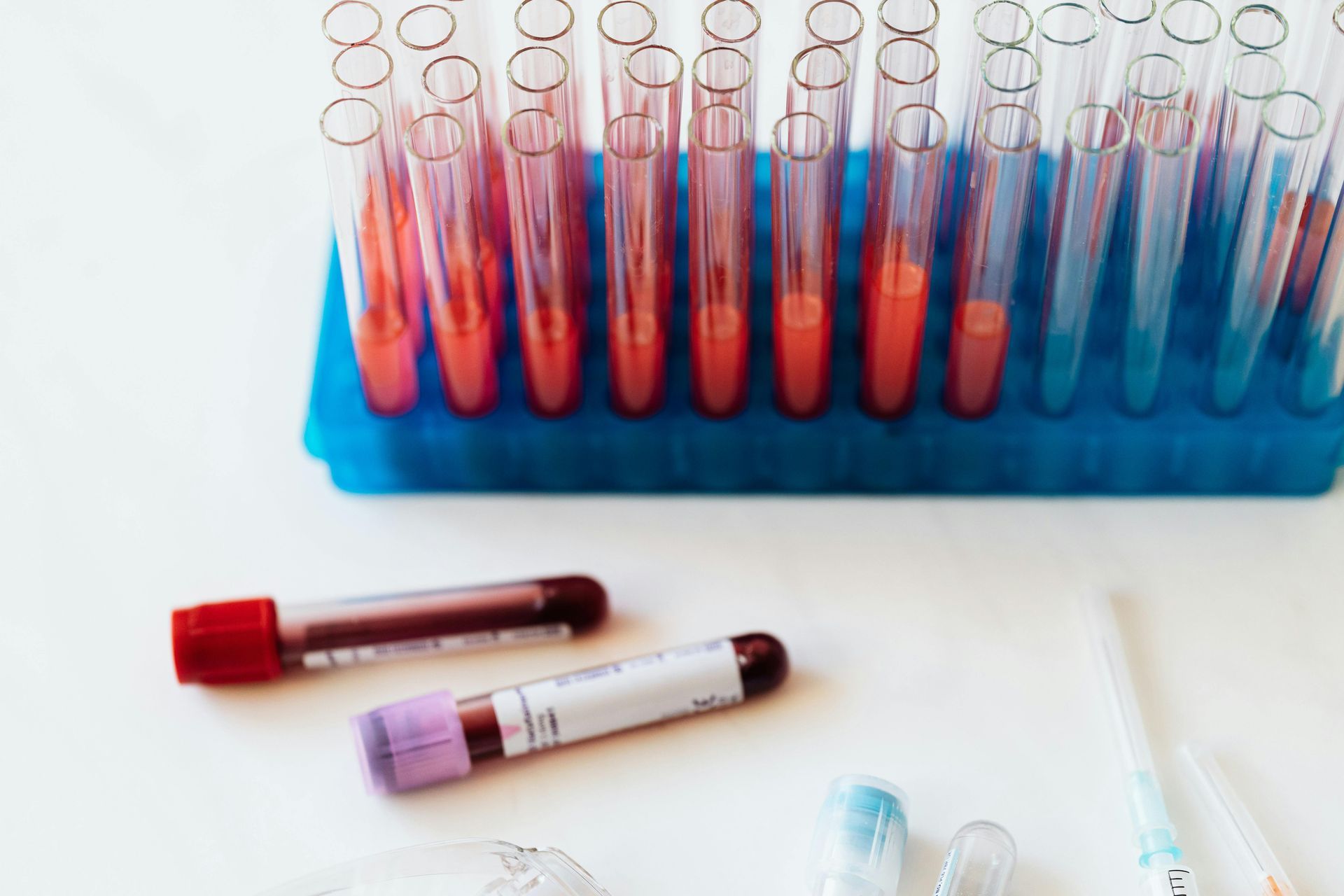Uric Acid
Understanding High Uric Acid (Hyperuricemia)
Uric acid is a waste product created when the body breaks down purines, substances found in certain foods and also produced by your body. Normally, uric acid dissolves in your blood, passes through your kidneys, and is eliminated in urine. When the body makes too much uric acid or the kidneys don’t eliminate enough, it builds up in the blood—a condition called hyperuricemia.
What Causes High Uric Acid?
Several factors can cause or contribute to elevated uric acid levels:
- Diet high in purines: Red meat, shellfish, organ meats, and alcohol (especially beer)
- Sugary beverages and fructose: Sweetened drinks and processed foods
- Obesity and metabolic syndrome
- Kidney disease or poor renal clearance
- Dehydration
- High blood pressure and cardiovascular disease
- Certain medications: Diuretics, aspirin, and chemotherapy drugs
What High Uric Acid Can Indicate (Beyond Gout)
High uric acid levels are associated with more than just gout.
These include:
- Kidney Stones: Uric acid crystals can form stones, leading to severe pain and urinary complications.
- Chronic Kidney Disease (CKD): Impaired kidneys struggle to eliminate uric acid, causing further elevation.
- Metabolic Syndrome and Insulin Resistance: High uric acid often appears alongside abdominal obesity, high triglycerides, and high blood sugar.
- Hypertension and Heart Disease: Uric acid may contribute to vascular inflammation and stiffness.
- Psoriasis: Accelerated skin turnover increases purine metabolism.
- Tumor Lysis Syndrome: Seen in cancer treatment when rapid cell breakdown causes a spike in uric acid.
- Lead Exposure: Chronic lead poisoning can impair kidney function and uric acid clearance.
Symptoms of High Uric Acid
- Joint pain or swelling (especially in the big toe)
- Kidney stone symptoms: sharp back or side pain, blood in urine
- Fatigue and muscle aches (from associated inflammation)
- Frequent urination or dark-colored urine (if kidneys are involved)
Testing and Lab Parameters
- Serum Uric Acid Test: Normal range is generally 3.5 to 7.0 mg/dL for adults, but this varies by lab.
- Urinalysis (24-hour urine uric acid): To assess excretion
- Creatinine and eGFR: To evaluate kidney function
- CBC, CRP, ESR: To evaluate inflammation
- Fasting insulin and lipid panel: If metabolic issues are suspected
Treatment and Lifestyle Recommendations
- Medications: Allopurinol or febuxostat to reduce production; probenecid to increase excretion
- Pain relief during flares: NSAIDs, colchicine, corticosteroids
- Stay hydrated: Aim for 2–3 liters of water daily
- Weight management: Reduces risk of gout and insulin resistance
- Exercise: Regular movement improves insulin sensitivity and kidney perfusion
Dietary Changes
- Reduce high-purine foods: Limit red meats, organ meats, shellfish, and anchovies
- Avoid sugary drinks: Especially those with high fructose corn syrup
- Limit alcohol: Particularly beer and spirits
- Eat more plant-based foods: Vegetables, whole grains, legumes (in moderation)
- Increase vitamin C intake: Can help lower uric acid levels
- Cherries and coffee: Both have been shown to reduce gout risk in studies
Supplements That May Help
- Vitamin C (500–1000 mg/day)
- Magnesium
- Fish oil (anti-inflammatory effects)
- Tart cherry extract
Fun Facts and Emerging Research
- Some researchers believe uric acid may be a marker of biological aging.
- Elevated uric acid in the brain has been explored in Parkinson’s and Alzheimer’s disease.
- Uric acid is an antioxidant in small amounts but becomes pro-inflammatory in excess.
- In evolutionary biology, humans lost the uricase enzyme (which breaks down uric acid), possibly giving us higher antioxidant capacity but greater disease risk when unbalanced.
Understanding Low Uric Acid (Hypouricemia)
Hypouricemia refers to abnormally low levels of uric acid in the blood. While high uric acid is more commonly discussed (due to its link to gout), low levels can also indicate underlying issues.
Possible Causes of Low Uric Acid
- Kidney issues that cause excessive uric acid excretion
- Liver disease (which may impair uric acid production)
- Low purine intake from diet
- Genetic disorders such as xanthinuria or Fanconi syndrome
- Certain medications like allopurinol, uricosuric agents, or chemotherapy
Potential Symptoms or Concerns
Most individuals with low uric acid are asymptomatic.
However, when caused by underlying disease, it may be associated with:
- Fatigue
- Frequent infections (rare)
- Oxidative stress (low uric acid may impair antioxidant defense)
When to Investigate Further
- Persistently low uric acid on multiple lab tests
- Symptoms of kidney dysfunction or liver issues
- History of frequent urination, electrolyte disturbances, or unexplained fatigue
What to Do
- Review medications that may lower uric acid
- Evaluate kidney and liver function
- Ensure adequate nutritional intake
- Discuss results with your healthcare provider

